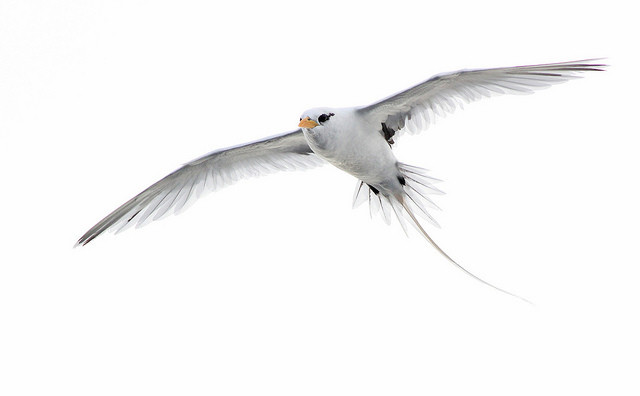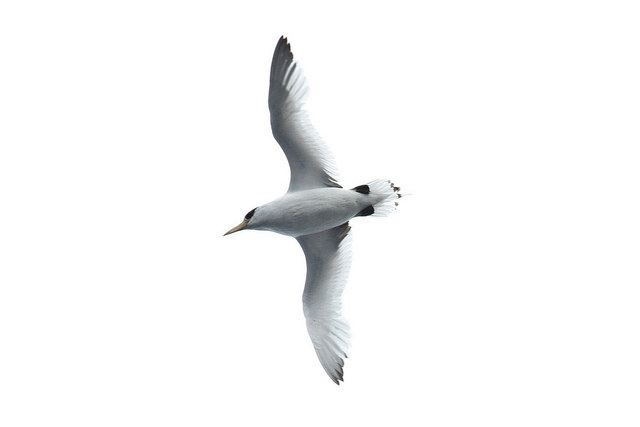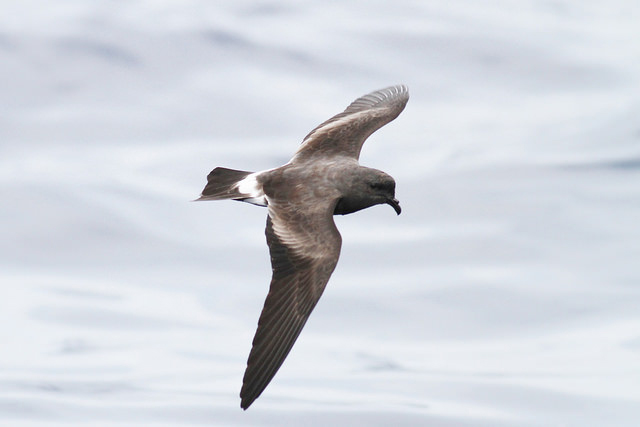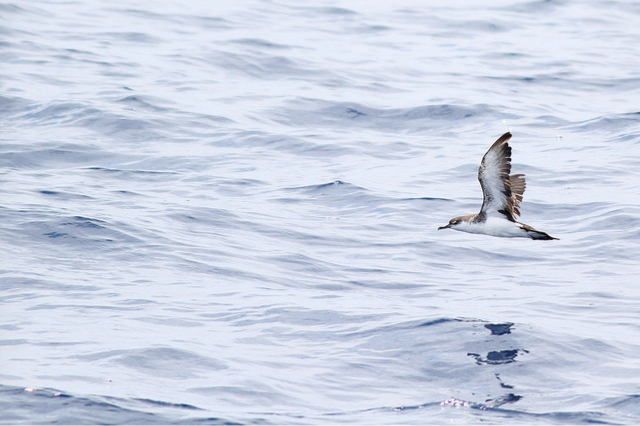Here we feature five of the past month’s exciting bird sightings as suggested by our experts. This time we’re highlighting offshore wonders: pelagic birds, including four species spotted on an incredible Brookline Bird Club pelagic trip to the continental shelf edge that took place on August 22-23. (For those who are new to birding, pelagic trips take participants far out to sea to observe species that don’t tend to come near the shore.)
White-tailed Tropicbird (Phaethon lepturus)
Tropicbirds are elegant, long-winged, slender-tailed birds of tropical oceans. A remarkable two species were seen on this trip: white-tailed and red-billed. Like terns, white-tailed tropicbirds plunge into the water to grab fish, and in warm seas they frequently consume flying fish. During the breeding season they perform elegant courtship flights during which one member of the pair reaches out to touch the other’s tail.

White-tailed tropicbird on the pelagic trip © Jeremiah Trimble
Red-billed Tropicbird (Phaethon aethereus)
The second tropicbird species observed on this trip was named for the mature adult’s red bill; first-year birds have cream-colored bills. Red-billed tropicbirds are larger than their white-tailed relatives. They can be common in the Caribbean and only very rarely wander north as far as New England.

Red-billed tropicbird on the pelagic trip © Peter Flood
Band-rumped Storm-Petrel (Oceanodroma castro)
Storm-petrels are among the smallest seabirds. They’re often seen hovering low over the water, pattering at the surface with their feet as they pick tiny planktonic crustaceans and other prey from the surface. Band-rumped storm-petrels breed on tropical islands in both the Atlantic and Pacific Oceans and spend the rest of their time at sea. Subtle field marks such as tail shape, white rump pattern, and flight behavior are useful in distinguishing this cryptic species at sea.

Band-rumped storm petrel on the pelagic trip © Peter Flood
Audubon’s Shearwater (Phaethon aethereus)
Common in many tropical oceans, they are among our smallest shearwaters. Audubon’s shearwaters tend to wander north in late summer and fall, especially when surface water temperatures are high. They have two feeding methods: sitting on the surface and grabbing prey, and diving to “fly” under water with powerful wingbeats.

Audubon’s shearwater on the pelagic trip © Jeremiah Trimble
Yellow-nosed Albatross (Thalassarche chlororhynchos)
Albatrosses don’t typically inhabit the North Atlantic, so these enormous wanderers are always cause for excitement. The yellow-nosed albatross has a wingspan of over 6.5 feet and a bright yellow-orange stripe at the top of its dark beak. The International Union for Conservation of Nature lists this species as endangered. Like many albatrosses, its population is declining, mostly because of longline fishing entanglement. Remarkably, a yellow-nosed albatross was photographed on Stellwagen Bank on August 10.

Yellow-nosed albatross (Atlantic) off Provincetown © François Grenon

